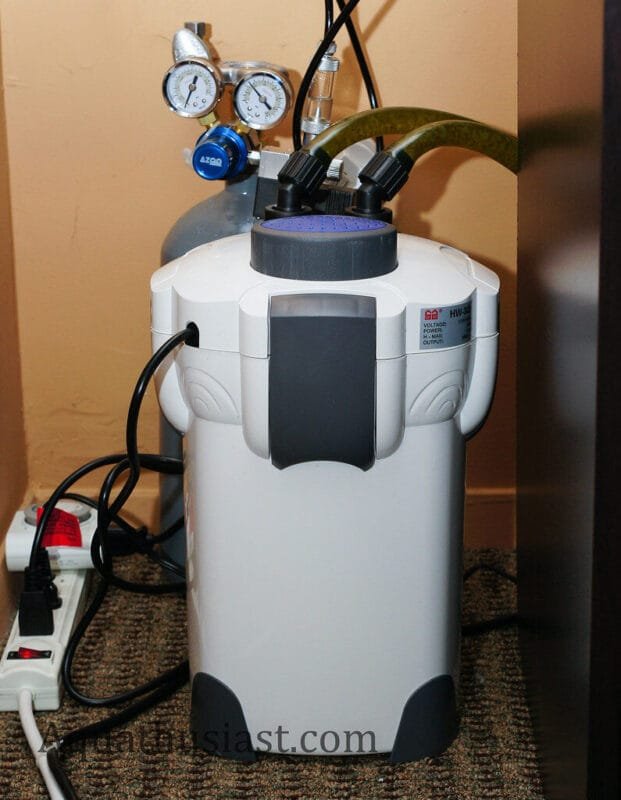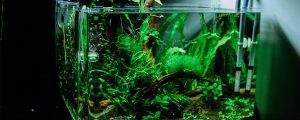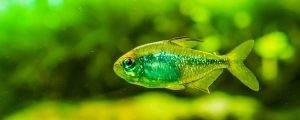Most aquarium enthusiasts struggle with maintaining crystal-clear water in their tanks, leading to unhealthy environments for fish and plants. To achieve and maintain pristine water quality, you need to focus on effective filtration, regular water changes, and appropriate stocking levels. By implementing consistent cleaning routines and monitoring your water parameters, you can create a healthy ecosystem. This guide will provide you with imperative steps to ensure that your aquarium remains not just visually appealing but also safe for your aquatic life.
Key Takeaways:
- Regularly test and maintain water parameters such as pH, ammonia, nitrites, and nitrates.
- Perform consistent water changes to remove toxins and replenish imperative minerals.
- Use a quality filtration system and ensure it is properly sized for your aquarium’s volume.
Understanding Water Clarity
Water clarity directly impacts the beauty and health of your aquarium. When you maintain a clear environment, you can better enjoy your aquatic life and monitor the conditions within the tank. Clarity is often an indicator of the overall water quality and can signal when adjustments are needed to maintain a thriving ecosystem.
Importance of Crystal-Clear Water
Maintaining crystal-clear water is imperative for both aesthetic and biological reasons. Clear water enhances the visual appeal of your aquarium, allowing you to appreciate the colors and behaviors of your fish and plants. Moreover, it contributes to a healthy environment where fish can thrive, as clarity typically indicates proper filtration and minimal algae buildup.
Common Causes of Cloudy Water
Cloudy water can arise from several sources, including poor filtration, overfeeding, and changes in water chemistry. Fine particles, bacteria blooms, and algae growth are common culprits that cloud your aquarium, often indicating that adjustments are necessary for optimal conditions.
Inadequate filtration creates a buildup of waste and uneaten food, resulting in turbidity as particles remain suspended. Bacterial blooms can occur when excess nutrients are present, often following overfeeding or water changes. Algal overgrowth, fueled by high light levels and nutrient-rich water, also contributes to murky conditions. Recognizing these sources lets you address the problem effectively and restore your aquarium’s clarity swiftly.
Essential Tips for Maintaining Water Clarity
Keeping your aquarium water clear requires consistent efforts and careful monitoring of various factors. Here are imperative tips to achieve and maintain optimal clarity:
- Perform regular water changes to remove impurities
- Invest in a high-quality filtration system for effective waste removal
- Use specialized water clarifiers to target specific issues
- Avoid overfeeding your fish to reduce waste production
- Maintain proper lighting to prevent algae growth
Any neglect in these areas can lead to cloudy water and unhealthy aquatic conditions.
Regular Water Changes
Regular water changes are imperative for maintaining a healthy aquatic environment. Aim to change 10-15% of your aquarium water weekly, which helps remove waste products, toxins, and excess nutrients. This practice encourages a balanced ecosystem and, in turn, supports your fish and plants. Monitor your water parameters to determine if more frequent changes are required based on your tank’s bioload.
Effective Filtration Systems
Effective filtration systems are key to ensuring water clarity in your aquarium. Select filters that provide mechanical, chemical, and biological filtration to address different types of waste. Canister filters or sumps often provide the best results, especially for larger tanks, as they can handle higher volumes of water and filter media. Additionally, consider using filter media specifically designed for clarity, such as activated carbon or foam pads, which can capture fine particles and prevent cloudiness.
Factors That Affect Water Quality
Various elements can compromise water quality in your aquarium. Factors such as pH levels, temperature, ammonia, and nitrate concentrations must be consistently monitored. Additionally, the presence of organic matter and uneaten food can lead to algae growth and poor water conditions. Each of these aspects plays a significant role in maintaining a healthy aquatic environment. Regular testing ensures you catch any imbalances early, maintaining both the aesthetic and health of your tank. Recognizing these factors allows you to take proactive steps in management.
Fish Stocking Levels
Your aquarium’s fish stocking levels directly influence water quality. Overcrowding can lead to increased waste production, which in turn elevates levels of ammonia and nitrite. Each fish you add contributes to the bioload, so it’s crucial to calculate the appropriate number of fish relative to the tank size. For example, in a 20-gallon tank, a maximum of 10 inches of fish is a common guideline. Maintaining balanced stocking levels promotes a healthier ecosystem, minimizing stress on both fish and the filtration system.
Feeding Practices
How you feed your fish significantly impacts overall water clarity. Overfeeding not only leads to excess waste but also deteriorates water quality. Provide only what your fish can consume within a few minutes, and introduce a variety of food types to ensure proper nutrition. If uneaten food settles on the substrate, it can decompose, creating harmful ammonia and fueling algae blooms. Regular feeding schedules and portion control contribute to optimal aquarium conditions.
In addition to controlling the amount of food, consider the type of food you offer. High-quality pellets, flakes, or frozen foods can ensure that your fish are nourished without excess waste production. Evaluate the feeding practices across different species, as some may require specialized diets. By doing so, you minimize the chances of uneaten food lingering in the tank and ensure a balanced ecosystem. Through careful monitoring and adjustment of feeding routines, you can significantly enhance water quality and clarity.
Managing Algae Growth
Algae growth can unsettle your aquarium’s balance, leading to murky water and unhealthy environments for your fish. Regular maintenance, appropriate lighting, and a balanced nutrient cycle are vital to control both green and brown algae. Monitoring algae levels and responding quickly can prevent overgrowth. Thou must remain vigilant in your aquarium routine to ensure your aquatic ecosystem thrives.
Identifying Algae Types
Algae present in your aquarium can vary widely, making identification key to managing them effectively. Common types include blue-green algae, green algae, and brown algae, each affecting the aquatic environment differently. Use the following table to differentiate their characteristics:
| Type | Characteristics |
| Blue-Green Algae | Thick, green sludge that can form a film on the surface. |
| Green Algae | Fine green particles that float or cover surfaces. |
| Brown Algae | Brown, dusty film typically found on glass and decor. |
| Red Algae | Sticky, reddish growth, often harmful to aquatic life. |
| Cladophora | Thread-like green algae that can become a nuisance. |
Control Measures
Implementing effective control measures is vital to keep algae growth in check. Regular water changes and reducing light exposure to your aquarium can significantly lower nutrient levels, hindering algae proliferation. Additionally, introducing algae-eating fish, such as Otocinclus or snails, can contribute to natural algae control. Ensuring your filtration system is up to par also plays a significant role in maintaining a clean aquatic environment.
Strategies for control extend beyond immediate fixes. Establishing a consistent feeding schedule helps prevent nutrient overload and minimizing excess phosphates and nitrates can curb algae growth. Furthermore, utilizing a high-quality filtration system will help to balance the ecosystem. Regular testing of water parameters should be part of your routine to identify triggers before they escalate into larger problems. Thou should engage actively in maintaining these measures to keep your aquarium pristine.
The Role of Water Additives
Water additives play a vital role in maintaining the clarity and overall health of your aquarium. By addressing specific issues such as cloudiness or chemical imbalances, these products can enhance the aquatic environment for your fish and plants. It’s crucial to choose additives that align with your tank’s unique requirements, ensuring a stable habitat for your aquatic life.
Anti-Cloudiness Chemicals
Anti-cloudiness chemicals are designed to effectively clear suspended particles in your aquarium water. These products work by flocculating tiny particles, making them larger and easier for your filtration system to remove. Many aquarists find success with these additives, particularly when dealing with new tanks or after substrate changes.
Water Conditioners
Water conditioners neutralize harmful substances present in tap water, such as chlorine and heavy metals. By using these conditioners, you create a safer environment for your aquatic inhabitants. Most conditioners also help detoxify ammonia and nitrites temporarily, making your water safe for fish health during transitions.
When using water conditioners, always check for products that cater to your specific tank type. Some conditioners not only remove toxins but also promote beneficial bacteria growth, vital for biological filtration. For instance, conditioners containing aloe vera can soothe fish skin while supporting gill function. Regular use, especially during water changes, ensures that your aquarium remains a pristine environment, allowing fish to thrive.
Routine Maintenance Practices
Consistency in maintenance practices is key to achieving and maintaining crystal-clear water in your aquarium. Regular water changes, typically 10-15% weekly, help dilute contaminants and replenish necessary minerals. Additionally, inspect and clean the filtration system monthly to ensure optimal performance, as a clogged filter can lead to cloudy water. Establishing a routine for testing and monitoring water parameters, along with regular cleaning, ensures a healthy environment for your aquatic life.
Cleaning Substrate and Decorations
Regular cleaning of your aquarium’s substrate and decorations is vital for minimizing waste buildup. Use a siphon to vacuum the substrate during water changes, which removes uneaten food and organic debris. For decorations, scrub them gently with a soft brush to eliminate algae, ensuring that you maintain their appearance without releasing harmful particles into the water. A clean environment not only looks better but also supports healthier fish by reducing the risk of disease.
Monitoring Water Parameters
Regularly monitoring water parameters significantly impacts your aquarium’s overall health. Testing for pH, ammonia, nitrite, and nitrate levels helps you identify potential issues before they escalate. Aim for a stable pH tailored to your fish species, while keeping ammonia and nitrite levels at zero for a safe aquatic environment. Nitrate levels should be kept under 20 ppm through routine water changes.
Consider investing in reliable test kits or digital testers for accurate readings. For instance, scheduled tests once a week can help you catch fluctuations early. If parameters shift beyond acceptable ranges, implement corrective actions such as adjusting chemical treatments or increasing water changes. Having precise control over these elements creates a stable habitat, further reducing stress on your fish and promoting vibrant aquatic life.
Final Words
With these considerations, you can achieve and maintain crystal-clear water in your aquarium. Regularly monitor and manage your water parameters, perform scheduled water changes, and ensure proper filtration. Additionally, avoid overfeeding your fish and maintain a balanced aquarium ecosystem with appropriate plants and decorations. By prioritizing these practices, you not only enhance the visual appeal of your tank but also create a healthier environment for your aquatic life.
Q: What are the best filtration methods for maintaining crystal-clear water in my aquarium?
A: The best filtration methods include using a high-quality mechanical filter to trap debris, a biological filter to break down harmful substances, and a chemical filter to remove impurities. Combining these three types of filtration can enhance water clarity significantly.
Q: How often should I perform water changes to keep my aquarium clear?
A: Regular water changes of 10-20% weekly are recommended to remove toxins and reduce algae growth. This practice helps maintain stable water parameters and clarity.
Q: What role do aquarium plants play in keeping water clear?
A: Aquarium plants help absorb excess nutrients and compete with algae for resources, which can lead to clearer water. Additionally, they produce oxygen, promoting a balanced ecosystem.







